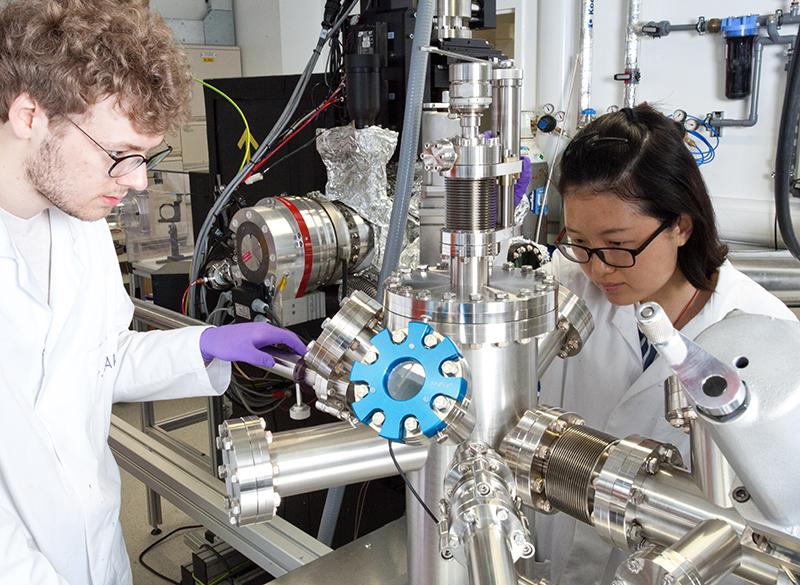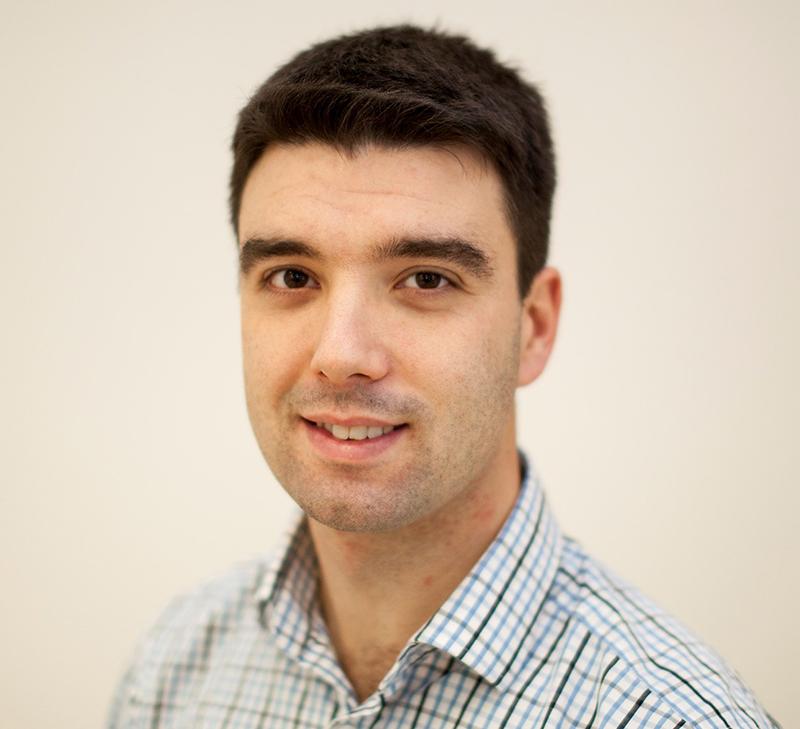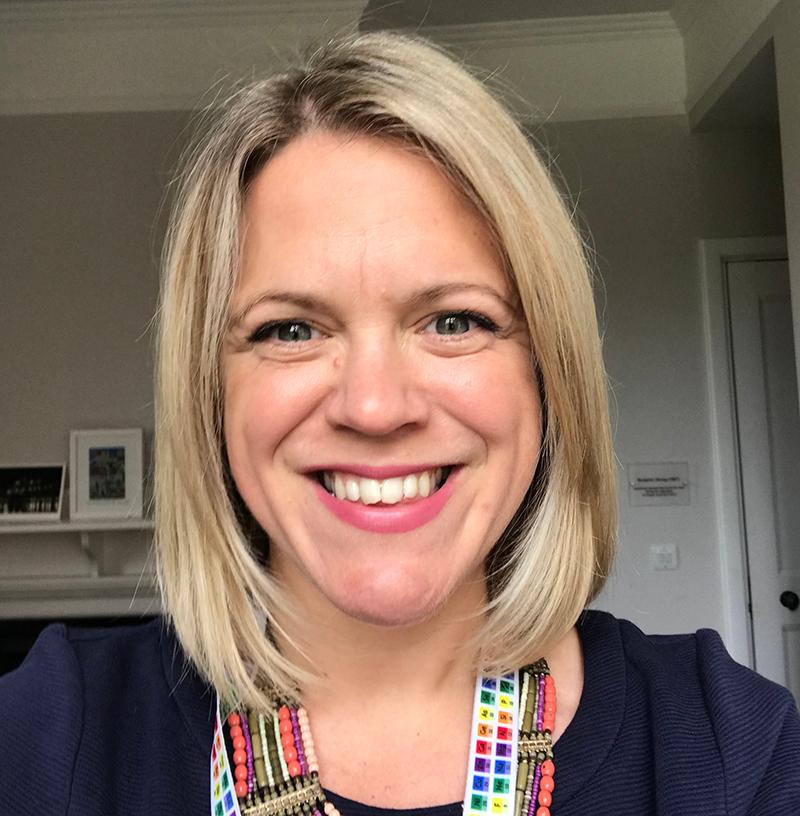Materials science, metallurgy and Cambridge - 100 years in the making
As the University of Cambridge, UK, marks the centenary of its Department of Materials Science & Metallurgy, Shardell Joseph catches up with two of its researchers about their experiences, engaging new talent and what the future holds.

On receipt of a donation from the Worshipful Company of Goldsmiths, a laboratory was opened dedicated to the study of metallurgy on 5 October 1920 at the University of Cambridge, UK – this was the birth of what is now known as the Department of Materials Science & Metallurgy.
Today, the department hosts 100 research fellows, postdoctoral scientists and visiting scientists, and more than 140 research students studying for postgraduate degrees.
Ruth Cameron, Professor of Materials Science and joint Head of Department, reflects, ‘Over the past 100 years our remit has expanded, our department has flourished and grown, thanks to the vision of the Goldsmiths company, and also the many outstanding scientists who have worked and studied here over the years. Their achievements have made the world a better place.’
Here, Materials World speaks to two of those scientists.
Nick Jones GradFIMMM – Reader in Metallurgy

With a passion for fundamentals and transforming materials, Nick Jones represents the department’s founding discipline – metallurgy. Just over 100 years later, interest in the fundamental properties of metals is still very much present. Nick’s own curiosity from a young age has transformed into a career that would ultimately help shape industry.
‘Part of my research, which is possibly the most fun in some ways, is dealing with transforming materials, this is the thing that first really got me into materials science,’ he reflects.
Nick reminisces about his first interaction with the discipline - a simple demonstration exhibiting behaviours in metals that would later influence his future.
‘There were these metals where you could stretch them out at room temperature from a spring shape. I was like, ‘okay, I've just stretched it out, you can do this to any spring'. But when you put this particular material in a cup of hot water, and it went back to its original shape, now that completely rocked my world as a 16 year old. It's kind of funny when I look back at it, now that I actively research these materials. The transformations are visually stunning, and it completely blew me away.
‘If you look around, pretty much everything in large structures or engineering assemblies – is held together by a metal. And that's what I find so interesting.’
Today, researchers like Nick are pushing the boundaries of understanding fundamentals. Dissimilar to a century ago, an interplay now exists between engineering industry and fundamental science – his work bridges the behaviour of metals and future applications.
‘A lot of my research has to do with energy efficiency, and, in particular, the aerospace sector. Obviously, there’s a huge drive to reduce carbon and other emissions. So, for conventional engine architectures on jet aircraft, we want to run them at higher temperatures to make them more efficient. This pushes the limits of what is in the middle of the engines, these components that we are seeing that run at really high temperatures. And at the moment these components are metallics.
‘We try to extend the usable temperature range of these alloys and also attempt to optimise the properties of lighter materials to reduce component weight. If successful, this therefore makes the overall aircraft lighter, and less fuel is needed to get up in the air.’
Despite being one of the oldest materials science practices in the department, he admits they are still not harnessing the ability of those materials to their maximum potential. ‘There's still quite a lot of unresolved questions about how exactly metals behave, what influences their behaviour – we need to understand that before we can put them into engineering applications. They have the potential to really offer some quite unique properties in service and things that would help large engineering structures, and I am working with a number of different industrial partners to try and assess the capabilities of these materials in service.’
Inspiration breeds innovation
Innovation comes from inspiration. And inspiration must be nurtured at a young age. Recognising the value of this, Nick is also active in outreach programmes via the department and his own contacts – from giving talks to schools to creating demonstrations that inspire young people across the UK.
‘When you are trying to reach out and inspire younger people, you've got to have that wow moment. For me, it was that bit of metal that you put in hot water.
‘And you also have to get to them young...often we've left it too late. We need to be engaging with people early on to show them what's there and what excites them, because everyone has potential and everyone has interest. And if you can match interest with potential, people really can achieve things because they're doing what they love.’
He highlights the need to engage teachers. ‘It's not necessarily just about one particular year group, or one class of children, because if you can improve a teacher’s appreciation of different disciplines, then they pass that on to a whole load more kids.
‘They get to educate year after year after year. So, if the teachers are engaged, and they know where to turn to if they want to get some information to help their curriculum, that's really important. There is a good scheme that's been running for a few years now, where all of the materials departments in the UK are joined together to create something called Discover Materials.’ (See a Materials World article from Discover Materials on recruitment into materials science and engineering at https://bit.ly/31hILQP).
Diversifying outreach
Acknowledging socio-economically challenged regions, and the knock-on effect on limiting opportunities for young people, Nick also makes a conscious effort to engage with children from a diversity of different backgrounds.
‘Alongside technology, you have a diversity of people – their journeys and where they've come from. That needs to be a representative spectrum of the community. Then people see that, ‘Oh, someone like me can go and do that', across the board. That's something we really need to try and push to engage with the next generation. If we don't do that, then we're never moving forwards.
‘You need to show people that there are opportunities in any walk of life – if they want to get somewhere, they need to be given the belief that they can get there. It's about potential, and it's about drive.’
In a joint venture between Cambridge and the University of Oxford, called Making Materials Matter, the departments engage with UK state schools, aiming to increase awareness among students of materials science and support teachers in inspiring further study of the physical sciences.
‘We have some groups of kids involved in this scheme and who we have a meeting with early on where we come up with a project. We then spend a day discussing it with them thinking about some of the scientific aspects and planning potential experiments. And then we devise simple experiments that they can do back at their school,’ Nick shares.
‘We keep in touch as they gather data, and then we go in for a visit. These are typically schools that are in areas that have associated socio-economic [issues], and so might not get this kind of opportunity so readily.
‘My experience with these groups is, that I think, at first, there is a little bit of resistance, because they're not quite sure what's going on. But then they get into it and they love the experience. And they generate so many good ideas.
‘Studies say that within certain areas, there's a mindset for kids that have never been shown other options, and therefore will just go down the same path. There are those invisible barriers that need to be shattered. And I mean that, because it's not breaking, we need to just destroy them, and give people the opportunities to see what's out there.’
Rachel Evans FIMMM – Reader in Materials Chemistry

Since it was established, the department at Cambridge has expanded its areas of research, and like many other materials science departments across the UK, is continually adapting to combat global challenges.
Reader in Materials Chemistry Rachel Evans represents this significant diversification of disciplines, with a focus on meeting climate demands with alternative energy solutions.
‘My group works on the design of new materials to manage the efficient use of light, both natural and artificial, within cities. I'm interested in cities as they account for about 70% of carbon pollution, and around 60-80% of energy consumption globally. We believe that the design of smart sustainable cities will be really important in meeting the UK and the global net-zero carbon goals by 2050.
‘I focus specifically on light, as there's lots of it in cities, both outside on a nice sunny day, but also artificial light – indoor and outdoor. We approach this in a number of ways, such as designing spectral conversion materials, converting sunlight into energies that can be used more efficiently by solar cells but that can also be incorporated into building designs.
‘We also focus on using artificial light from indoor lighting, and we make optical amplification materials to try and transport indoor light to direct it. This can be used in visible light communications, Light Fidelity (LiFi), or indoor photovoltaics. Our key focus is to develop materials that manage light or convert light in some way for open-end applications.’
Before coming to Cambridge, Rachel was an Associate Professor in Chemistry at Trinity College Dublin, Ireland. ‘I started off as a physical chemist just looking at fundamental physical properties. Then we started to look into commercialising a technology I developed which was this optical sensor platform.’
Co-creating a start-up, Senoptica Technologies, Rachel found herself wanting to push past a focus on fundamental properties. ‘It stimulated my interest to move beyond fundamentals and start thinking about application-driven research.’ Looking for a change, Rachel spotted an advert for a lectureship in Materials Chemistry in the Cambridge department.
Pushing the boundaries
A year ago, she was awarded a five-year European Research Council consolidator grant to accelerate growth of her research group and develop spectral conversion materials to manage sunlight in cities.
‘We are working on ways to convert and concentrate high-energy sunlight so that solar cells can use them more effectively. This involves into lower energy and vice versa. And then to integrate these. So, we look at the fundamentals of molecular materials engineering design and property characterisation, and also identifying target applications so that device structures can be engineered, and then putting these into devices with the ultimate goal of integrating them within functional architecture in cities.’
Inspired by factors affecting the circular economy, Rachel has an increasing interest in analysing sustainability throughout the lifecycle. ‘I'm trying at the moment to think about, at the very beginning of materials design, what is the carbon footprint across the entire process of the integration and applications of these materials? What is the value in this continuing forward? Or are we genuinely making a positive contribution, or simply contributing another problem to be fixed at a later date?’
She adds, ‘It's a new era. For me, I'm not claiming to be an expert in this by any stretch of the imagination, but it has become something that I'm more consciously thinking about. My whole research is based on materials for energy, so the last thing you want to do is generate something that you're claiming to help solve the problem, but what are the knock-on effects of it? I’m now thinking holistically about the whole process – I think there's so much value in that.’
A shift in culture
This new way of thinking also mirrors other aspects of diversification in the department. ‘Historically, the department’s origins were very much metallurgy, and then morphed to encompass materials science. Modern materials science straddles pure science and engineering, and then it morphed into material science and metallurgy. And, nowadays, there's certainly a shift towards thinking about research focused on tackling global and grand challenges,’ Rachel ponders. ‘So, the department's research is organised under strategic themes. Energy is obviously a big component of that.’
This shift in focus, Rachel explains, is a prevalent factor in the diversity of disciplines within the department. ‘The fact that you could speak to someone else in the department, and not necessarily fully grasp their expertise, shows the vast diversification of different disciplines, which again, draws on the progression of the department itself. I think it does enable you to push the boundaries of different subject areas, because you're exposed to a diverse range of thinking, but also ideas and skillsets. There are people within the department who are doing such dramatically different things that it encourages you to think in a more open way about what you're doing and how you are doing it – it really does help to push the boundaries of material science.’
She also recognises the value of increasing the range of people within the department. ‘I think, in terms of the composition of the staff members – academic, administrative and technical – we're a reasonably diverse bunch. In terms of gender, there's no issues, but I think in terms of other characteristics, we could be doing better.’
With a desire to embed positive growth in the department’s culture and environment, Rachel was the former Chair of its Equity, Diversity and Inclusion (EDI) Committee. ‘We are actively engaging, and things are changing. There are inevitably issues to be resolved in that space, but the department has approached it very proactively, having working group discussions with members of different communities to see what we can do.
‘If you focus on making the place good for everyone, then a lot of the other big picture issues start to become a little bit easier to tackle. I think, sometimes, people just tackle EDI by box-ticking off a load of boxes like, ‘oh, we did this, we ran this event, this is great’. The department is looking at it in a different way – actively seeking views and input. Everyone gets a voice. We can do more, everyone can do more, but I think there are positive role models in the department.’







